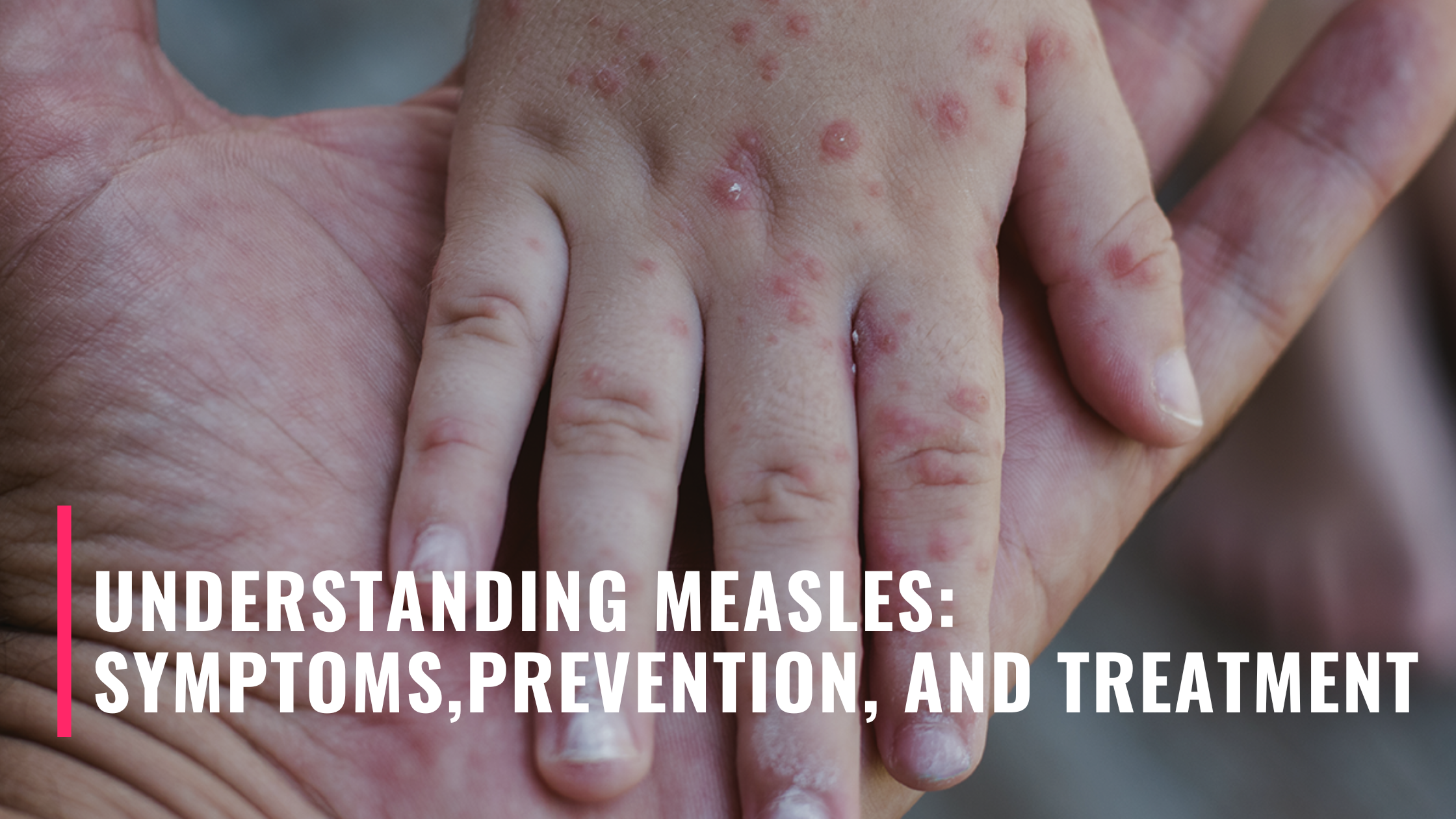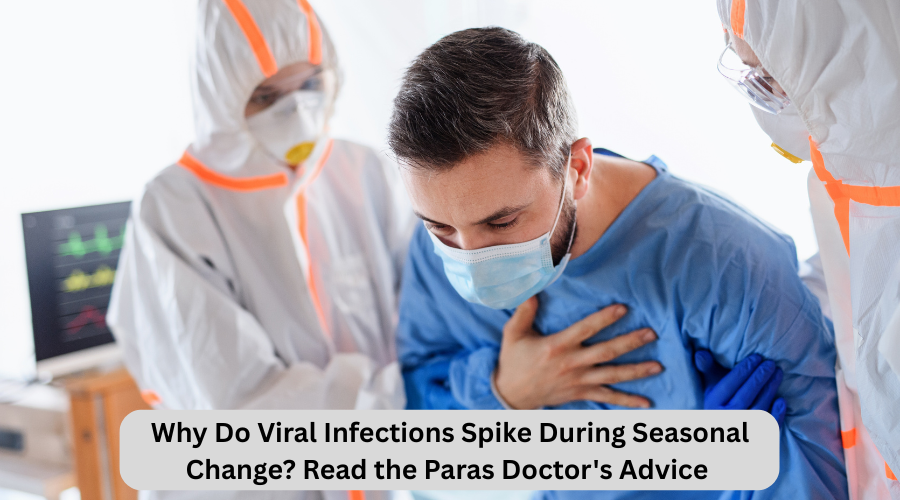Understanding Measles: Symptoms, Prevention, and Treatment
The highly contagious disease measles is caused by a virus. It can spread swiftly when an infected person breathes, coughs, or sneezes. Severe illness, complications, and even death may result from it.
Children are most frequently afflicted with measles, although it can affect anyone. Measles affects the respiratory system first, then moves on to other body parts. Symptoms include a high fever, runny nose, cough, and rash all over the body. Vaccination is the best line of defense against getting the measles or spreading it to others. With the safe vaccine, your body can fight off the virus. Prior to the measles vaccine’s development and widespread use in 1963, major epidemics that occurred about every two to three years were thought to cause 2.6 million deaths annually.
Despite the availability of a reliable and affordable vaccine, an estimated 128 000 people died from measles in 2021, the majority of whom were children under the age of five.
56 million deaths were successfully avoided between 2000 and 2021 thanks to increased vaccination campaigns carried out by nations, the World Health Organization, the Measles & Rubella Partnership (formerly the Measles & Rubella Initiative), and other international partners. Measles deaths were reduced by vaccination from 761 000 in 2000* to 128 000 in 2021.
The COVID-19 pandemic’s effects
The COVID-19 pandemic caused problems for vaccination and surveillance programs. Millions of children are now at risk of diseases like measles that can be prevented due to the global decline in immunization rates, suspension of immunization services, and decreased surveillance.
Every country has a risk of measles outbreaks, and areas with low immunization rates encourage the virus’s spread, putting all children who have not received vaccinations at risk.
Despite the COVID-19 pandemic, we still need to make progress and meet the regional measles elimination targets. In order to provide two doses of the measles vaccine to every child, primary healthcare should strengthen its immunization programs. Strong surveillance systems should be put in place by nations in order to find and close immunity gaps.
Symptoms and indicators
Measles symptoms typically appear 10–14 days after viral exposure. Having a noticeable rash is the most obvious symptom.
First signs typically appear 4-5 days later. Among them are
Running nose, watery, red eyes, and tiny white spots inside the cheeks.
After exposure, the rash usually appears on the face and upper neck and lasts for 7 to 18 days. It gradually spreads to the hands and feet over the course of three days. It typically fades after 5-7 days.
The majority of measles deaths are caused by the disease’s complications.
Among the complications are
Blindness, encephalitis, an infection that can cause swelling in the brain and even damage to it.
extreme diarrhea, accompanying dehydration, and ear infections
severe respiratory issues, such as pneumonia.
Who is in danger?
Any person who is not immune—that is, who has received vaccinations but has not developed immunity—can contract the infection. Pregnant women and young children who have not received their vaccinations are most at risk for serious measles complications.
The measles is still common in some parts of Asia, the Middle East, and Africa in particular. The vast majority of measles deaths take place in nations with low per capita incomes or inadequate health infrastructures that find it difficult to vaccinate every child.
Routine immunization is disrupted by damaged health infrastructure and health services in nations experiencing or recovering from natural disasters or conflicts, and infection risk is increased by overcrowding in residential camps. The greatest risk of dying from the measles is in children who are malnourished or have other immune system-compromising conditions.
Transfer
Measles is one of the most contagious illnesses in the world. It is spread by contact with infected nasal or throat secretions (coughing or sneezing) or by breathing in air that has been inhaled by an infected person. The virus can spread through the air or on contaminated surfaces for up to two hours. As a result, it is extremely contagious; an infected person can spread the infection to nine out of ten of their close contacts who have not received the vaccination.
Four days prior to and four days following the rash’s appearance, an infected individual can spread the infection. Measles outbreaks can result in life-threatening complications and even death, especially in young children who are malnourished. In nations on the verge of eradicating the measles, imported cases.
Handling
The measles has no particular treatment. Relieving symptoms, ensuring the patient is comfortable, and averting complications should be the main goals of care.
Regaining fluids lost due to vomiting or diarrhea can be accomplished by treating dehydration and drinking adequate water. Maintaining a nutritious diet is also crucial.
Antibiotics are sometimes prescribed by doctors to treat ear, eye, and pneumonia infections.
Two doses of vitamin A supplements should be administered, separated by 24 hours, to all children and adults who have the measles. Low vitamin A levels, which can happen even in children who eat healthily, are restored by this. It may lessen the risk of blindness and eye damage. Supplementing with vitamin A may also lower the number of deaths caused by measles.
Prevention
The best defense against measles is a community-wide immunization program. Every child needs to receive a measles vaccination. The vaccine is affordable, efficient, and safe.
To ensure immunity, children should receive the vaccine in two doses. The first dose is typically administered between the ages of 9 and 15 months in other countries, and at 9 months in countries where measles is prevalent. After a child reaches the age of 15 to 18 months, a second dosage should be administered.
In addition to the measles vaccine, other vaccinations for the mumps, rubella,and/or varicella are frequently administered.
The key to lowering the number of measles deaths worldwide is routine measles vaccination in conjunction with large-scale immunization campaigns in nations with high case rates. Over the course of the last 60 years, the measles vaccination has been available for less than $1 per child. In an emergency, the measles vaccination is also administered to contain outbreaks. Vaccination against measles should begin as soon as possible for refugees, as they are especially vulnerable to outbreaks.
The benefit of protection against rubella, the most common vaccine-preventable infection that can infect unborn children, is increased when vaccinations are combined. It also slightly raises the cost but permits sharing delivery and administration costs.
Read More: Prioritizing Mental Health: A Vital Journey Within Ourselves











